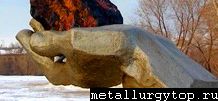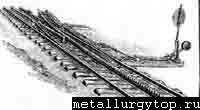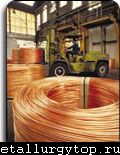A Historical Perspective
 Before you read this article, do a search on the web for a painting using the key words «Norman Rockwell watchmaker„ . Rockwell had a knack for capturing the very essence of his subject in his artwork and “The Watchmaker» is no exception. It should also be noted now that we are speaking of a mechanical spring powered 'wind–up' watch, not a modern quartz watch.
Before you read this article, do a search on the web for a painting using the key words «Norman Rockwell watchmaker„ . Rockwell had a knack for capturing the very essence of his subject in his artwork and “The Watchmaker» is no exception. It should also be noted now that we are speaking of a mechanical spring powered 'wind–up' watch, not a modern quartz watch.
The term Watchmaker was originally used to denote a craftsman or artisan who actually made pocket watches from scratch. In later years, this term became synonymous with a person who repaired both pocket and wrist watches due to the expertise needed. Even though actual watch manufacture was not part of a watchmaker's duties, the same level of craftsmanship is needed to repair a watch. Understanding of theory, mechanics, metallurgy, and manual dexterity were required. If a part was not available, it had to be made from scratch. This was especially true of the watchmaker who was isolated from urban centers where parts were not readily available.
Although requirements differed in each country, traditionally, a watchmaker would have many years apprenticeship under a skilled craftsman, and then would join a guild (specialized groups for any particular craft or trade). In more recent times, states and provinces would issue an official registration for watchmakers meeting specific requirements. Many schools existed for watchmakers, and companies such as Elgin provided training for employees. As part of this training, many classes actually required the student to make a pocket watch (using pre–engineered part dies and molds).
As the mechanical watch fell from favor, and cheaper quartz watches dominated the market, the number of watchmakers diminished as they aged and retired. Schools slowly closed, and formal training opportunities have become limited. The traditional watchmaker is now a rare find. The skills used in repair of mechanical watches, especially antique watches, is kept alive through the knowledge of experienced watchmakers, from older mostly out of print books and, interesting enough, the Internet. Much information can be obtained by searching the Internet, as there are many public domain books that have been scanned, and are available for anyone interested in watch collecting, and the history behind the mechanical pocket watch and the wrist watch.
So, take a look at the painting «The Watchmaker» again, and study the detail. Note the intense interest in the young boys face as he studies the seemingly magic of watch repair. That's the childlike interest that leads many today to keep these 'lost' crafts alive.
If you need to find someone qualified to repair a mechanical watch today, what do you need to know, and how to you choose? This will be the topic of companion articles.





Hitachi Table Saws - Model Highlights
 Hitachi is an international company, but the United States headquarters is located in Atlanta, Georgia. Hitachi products are available in almost 4000 retail stores with service centers numbering over a thousand. Hitachi claims on their website to have the best power tools available for professional use.
Hitachi is an international company, but the United States headquarters is located in Atlanta, Georgia. Hitachi products are available in almost 4000 retail stores with service centers numbering over a thousand. Hitachi claims on their website to have the best power tools available for professional use.
The United States branch of the Hitachi Corporation has been independently operating since 1948. However, their affiliation with the parent company affords Hitachi the advantages of quick access to new technology that is developed in other fields but can also advance the efficiency and performance of power tools. Because of Hitachi's expertise in metallurgy, plastics, and casting, this company can make power tools that are easier to use as well as faster in performance and more durable for long term use.
Hitachi uses a three dimensional computer aided design (CAD) system to build its power tools in virtuality before building a live prototype. By using this virtual prototype, Hitachi can do extensive analysis to find out where the most likely failures will happen. In this virtual setting the power tools can be tested for strength, vibration resistance, effects of impact, effects of harsh environmental conditions, and effectiveness of safety features. This process saves time and money by eliminating the need to build a real prototype and test it just to find that they have to go back to the designing board to start all over again.
This design system has led to improvements such as a cooling system that allows the tools to run for longer periods of time without burning out. Another technological advance improves the balance so that tools are lighter and easier to maneuver.
Hitachi's table saws benefit from all of these designs and advances. They offer three different models of table saws for various levels of work conditions.
- C10FL 10" Stationary Table Saw
This table saw is built for long rip cuts and repeated cross cuts. It has a 3 horsepower motor that is fully encased to protect it from the damages of dust and debris. The blade adjustment knobs are conveniently located on the front of the table saw. It includes a tabletop angle scale, T–slot miter gauge, and caster set, as well as a dust collection hook–up.
- C10FR 10" Job site Table Saw
This table saw is designed to do most of the same work as the stationary table saw but with some added features for portability. This model includes an LED light to make it easier to see the piece you are working on. It also has a cut indicator, miter gauge with nine positive stops, a dust chute, and a handy fold–and–roll stand to make moving the whole table saw easy.
- C10RA2 Table Saw with Stand
This portable table saw is somewhat smaller than the previous two models. The motor is 2.6 horsepower with a locking rip fence and front and rear guide bars. Safety features include a clear blade guard, a splitter that directs the split wood away from the user, an anti–kickback feature, and an electric brake. The tabletop is smaller, but this table saw only weights 64 pounds.
Hitachi warrants portable tools for five years and stationary tools for two years for the original owner. Any accessories are warranted for thirty days.
The company web site includes many positive testimonials from satisfied customers. Hitachi is a well–known table saw manufacturer with many retailers around the United States, so you are sure to find one of their table saws that might fit your needs.





Archaeology in South India
 And a head first jump into the folk–lexicon of village Karnataka
And a head first jump into the folk–lexicon of village Karnataka
It was mid–September and the beginning of a very temperate South Indian Autumn; a group of students and I were on a visit to a local archaeological site just outside of Bangalore city. We all packed into a mini–bus and rode out the sixty mile journey to the Ramanagara Taluk Valley, where we soon came upon the ancient environs of the Kunagal Hills. Our guide in this venture was the archaeologist, cultural anthropologist, and folk–lore scholar, Dr. M. Byregowda.
Dr. Byregowda is a man of action who possesses a great love for pre–history, folk–knowledge, and old–time Indian tradition. He took his doctorate degree after doing an extensive field study on the Iruligas tribals. "My thesis on the Iruligas for the PhD comprised 480 pages. But I ended up writing 18 books, including children's plays based on folk–tales, practices, traditions, and games,« he was quoted as saying in an Indian newspaper. The article, which was entitled „Unsung Heroes,“ also said that, »For him [Byregowda], the tribal is a natural scientist, the master of local knowledge, the best teacher and learner in nature."Byregowda regularly walks through the hills of Southern India as though he's the Indiana Jones of the east; ever searching for any clue that could direct him towards a better understanding of the region's long buried pre–history. He keeps his head towards the ground, least he step over an ancient pot–sherd, and his ear towards the wind, so that he doesn't miss any old–timer's folk–tales. «In every village next to a hill, you can find interesting legends related to the hill,» he said. Byregowda's attempt to assemble and re–vitalize fragments of past ways and knowledge has been a true passion for him since he was a child. «The rocky hills of Ramnagar, where I hail from, have always fascinated me,» he shared in the above referenced article. It was Byregowda himself who found and preliminarily excavated the site that my class and I were now about to explore.
We all piled out of the mini–bus near the edge of a small village and, acting like the eager American university students we were, began pointing our cameras at anything and everything. The landscape that we stepped into seemed as ancient as time itself; and row of huge rock spires protruded from the ground, gently flanking the small village in its' crest. This was pre–history in the raw, and I could feel the temporal displacement that comes from being near archaeological sites. We then walked through the village and began ascending the hill at its edge.
At the apex of this hill was a flat area which was the location of the pre–historic habitation that we came to visit. It was on a small level plan, no bigger than three or four acres and it had a few square test units dug into it. As a field–archaeologist myself, with six years of professional experience, I intuitively began inspecting the work of my Indian brethren. The site appeared to have been left dormant for a while so I could not, nor really did I wish to, make any value judgments on their field methods. The other students soon gathered around the main test unit and Dr. Byregowda began telling us about the pre–history of the region and the artifacts that were unearthed from the excavation that he initiated, and I assume, directed. The area had been inhabited by a grand succession of cultural occupations; including the Shathavans, Gangas, Noloambas, and the Mysore Wodeyars. There are also the remains of once–upon–a–time forts and metallurgy foundries scattered throughout the hills.Byregowda then presented us with some local artifact samples; which consisted of lithic choppers, axe heads, large scrappers, and a couple of bi–faces. We passed these pre–historic tools amongst us and then we followed Dr. Byregowda's lead up a steep hill.
When we arrived at the top of the hill we found a large cave that was formed by a few huge stone spires that had come together in 'tee–pee' like formation. Dr.Byregowda told us that an annual poetry celebration was held in the cave and people from all over the region would come to recite poems. We were then led trough the dips and curves of the cave and out the other side. There was another hill on this side that I ran up jovially and embarked for the edge. Once there, I could gaze upon the entire valley, which consisted of agricultural fields that stretched on and on ad infinitum. This was the Southern India that I set out for; all of those Bangalore ideals of progress and cultural–denial did not seem to exist here. This was the first time since I came to India to study that I felt as if I were experiencing something genuine. Dr. Byregowda then began to tell us about how the people who attend the poetry celebration also drink water from the natural spring that was near the cave. He then launched into a folk–tale about how the spring originated.
His story, which came from the folk–lexicon of the nearby villages, went something like this very much abbreviated version: there were two sisters who lived in a local village; one of them was good and the other was bad. Then a prince came into town and made springs out of them. The good–sister–spring contained water that was good for both heart and soul and the bad–sister–spring was poisonous. On the hill, right were we stood, were two springs side by side; one of them emitted nutrient rich, mineral water and the other would make people ill if they drank from it.
From my shadily recited version of Dr. Byregowda's story one can readily assess the true pertinence of folk–tales. Folk–tales consist of stories, anecdotes, and wisdom that are meant to entertain as well as inform members of a specific community about the ways of their culture, history, and environment. Folk–tales, essentially, constitute a type of orally transmitted survival manual from which older generations teach their children how to live within their society and world. As the above story literally indicates: there are two springs near a village which lie side by side; one is poisonous and the other rejuvenating– how do the villagers remember which is which and convey this information to the next generation? One of the best ways that communities the world over have collectively distilled this knowledge into a usable lexicon is through the story. These folk–tales are meant to be ingrained into the psyches of the local inhabitants from the time they are born and then passed on by them to their children in the same manner. In this way, tradition is passed on and people continue to possess the knowledge of their ancestors.
Dr. Byregowda knows the value of these folk–tales intimately, and he has dedicated a large portion of his free time (he has a regular job in an unrelated sector and a family to care for) to their preservation and proliferation. He seemed to even feel that it was important for us, as silly university students from a far off land, to be told these stories, and he excitedly jumped into another tale. After this story, which taught us about the origin of an interestingly shaped rock outcropping, we drank some water out of the good–sister–spring and then began walking back to the mini–bus.
It was time for us to leave these beautiful hills in the midst of the Karnataka country side. I learned very much from Dr. Byregowda and I was truly inspired by the passion that he puts into his work. With the vast economic and cultural changes that India and the rest of the world are going through, it is readily apparent that the folk–lexicon of centuries is at stake. It takes the will of dedicated people like Dr. Byregowda to collect and preserve this fast depleting treasure–trove of knowledge. One day perhaps, in another time, the people of India and the world may be ready to dig back into this cache and revitalize the time–honed traditions of our ancestors. When the corporations fail and the new world order crumbles; when the environment can take no more neglect; when we have to pick up the pieces and start from scratch, the work of Dr. Byregowda shall provide us with a temporal look back into the past– a map by which we can proceed.




